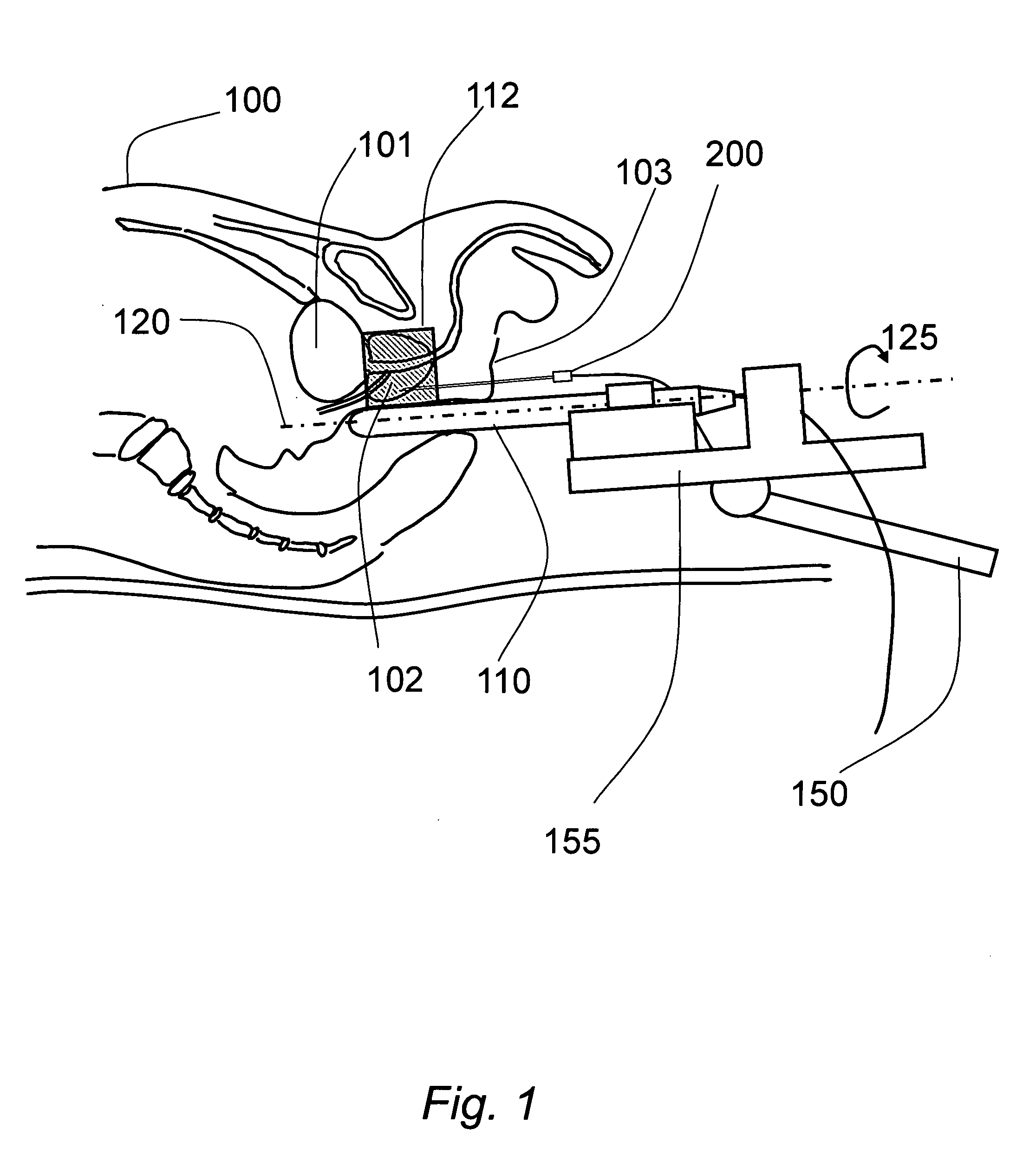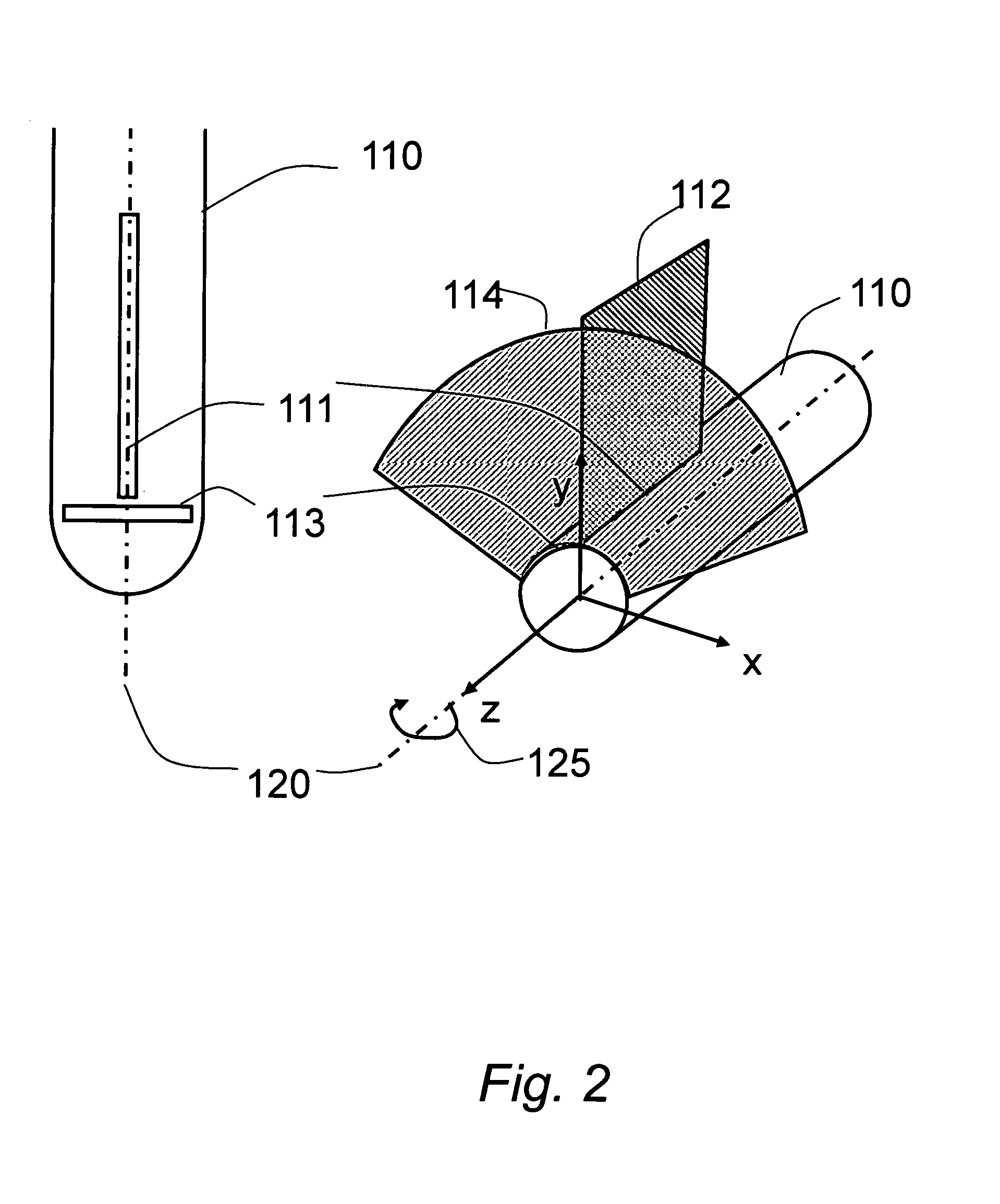Elastography-based assessment of cryoablation
a cryoablation and elastography technology, applied in the field of tissue cryoablation, can solve the problems of inability to monitor cryoablation in real time with conventional ultrasound, inability to monitor cryoablation boundaries with standard b-mode ultrasound, and inability to provide good contrast of the region
- Summary
- Abstract
- Description
- Claims
- Application Information
AI Technical Summary
Benefits of technology
Problems solved by technology
Method used
Image
Examples
Embodiment Construction
[0020]We propose to use the elasticity of tissue, measured with ultrasound-based elastography, to determine whether a region of tissue has been properly cryoablated. Our description will be with reference to a cryoablation system for the prostate, but it is understood that this reference to the prostate is in no way limiting and that applications to other organs will be similar and easily adapted to by someone skilled in the art.
[0021]Aspects of the invention are described with reference to FIGS. 1 through 5 and FIG. 8 as applied to prostate ablation. For a cryoablation procedure, the patient 100 is being imaged by an ultrasound transducer 110 that images the prostate 102 as well as some of the periprostatic region including part of the bladder 101. The transducer is connected to a brachytherapy stabilizer 150 and stepper 155, as exemplified by the CIVCO MicroTouch stabilizer with the EXII Brachytherapy Stepper. The transducer, shown in FIG. 2, is a brachytherapy transducer having a...
PUM
 Login to View More
Login to View More Abstract
Description
Claims
Application Information
 Login to View More
Login to View More - R&D
- Intellectual Property
- Life Sciences
- Materials
- Tech Scout
- Unparalleled Data Quality
- Higher Quality Content
- 60% Fewer Hallucinations
Browse by: Latest US Patents, China's latest patents, Technical Efficacy Thesaurus, Application Domain, Technology Topic, Popular Technical Reports.
© 2025 PatSnap. All rights reserved.Legal|Privacy policy|Modern Slavery Act Transparency Statement|Sitemap|About US| Contact US: help@patsnap.com



